Audio cables are the lifelines of any audio production setup.
They are the key to transmitting sound signals from one piece of equipment to another, shaping the quality and clarity of the sound that is ultimately produced.
So, as a music producer, it’s important to know all about the different types of audio cables to optimize your sound quality.
As well as maintain signal integrity and ensure a seamless workflow in your home studio or live setup.
In today’s article, we’ll be breaking down:
- The different types of audio cables ✓
- Analog cables: the foundation ✓
- RCA cables and their versatility ✓
- Balanced vs. Unbalanced cables ✓
- The specifics of XLR cables ✓
- USB cables in digital audio ✓
- The function of MIDI cables ✓
- Specialized audio cables for specific needs ✓
- Speakon cables, speaker cables, and HDMI cables ✓
- TRS and TS cables ✓
- Integrating cables with audio interfaces ✓
- Advanced cable concepts ✓
- Organizing and maintaining your cable setup ✓
- Much more about audio cables and their importance ✓
By the end, you’ll know all about different types of audio cables to help you master their importance and get back to what matters: making music.
You’ll have the expertise to handle and select cables that best suit your production needs and ensure your audio output is of the highest quality, just like a professional.
So, let’s dive in…
Table of Contents
- Why Understanding Different Cable Types is Crucial for Music Producers
- #1. Analog Cables: The Foundation
- #2. RCA Cables: The Versatile Connector
- #3. & #4. Balanced Cables vs Unbalanced Cables
- #5. XLR Cables: The Professional’s Choice
- #6. USB Cables: Connecting the Digital World
- #7. MIDI Cables: The Language of Digital Instruments
- Specialized Audio Cables: For Specific Needs
- #10. Speaker Cables: Delivering Quality Sound
- TRS Cables & TS Cables: The Jacks of All Trades
- Integrating Cables with Audio Interfaces and Other Audio Equipment
- Advanced Cable Concepts
- Bonus: Random Tips To Master the Different Types of Audio Cables
- Types of Audio Cables: Final Thoughts
Why Understanding Different Cable Types is Crucial for Music Producers
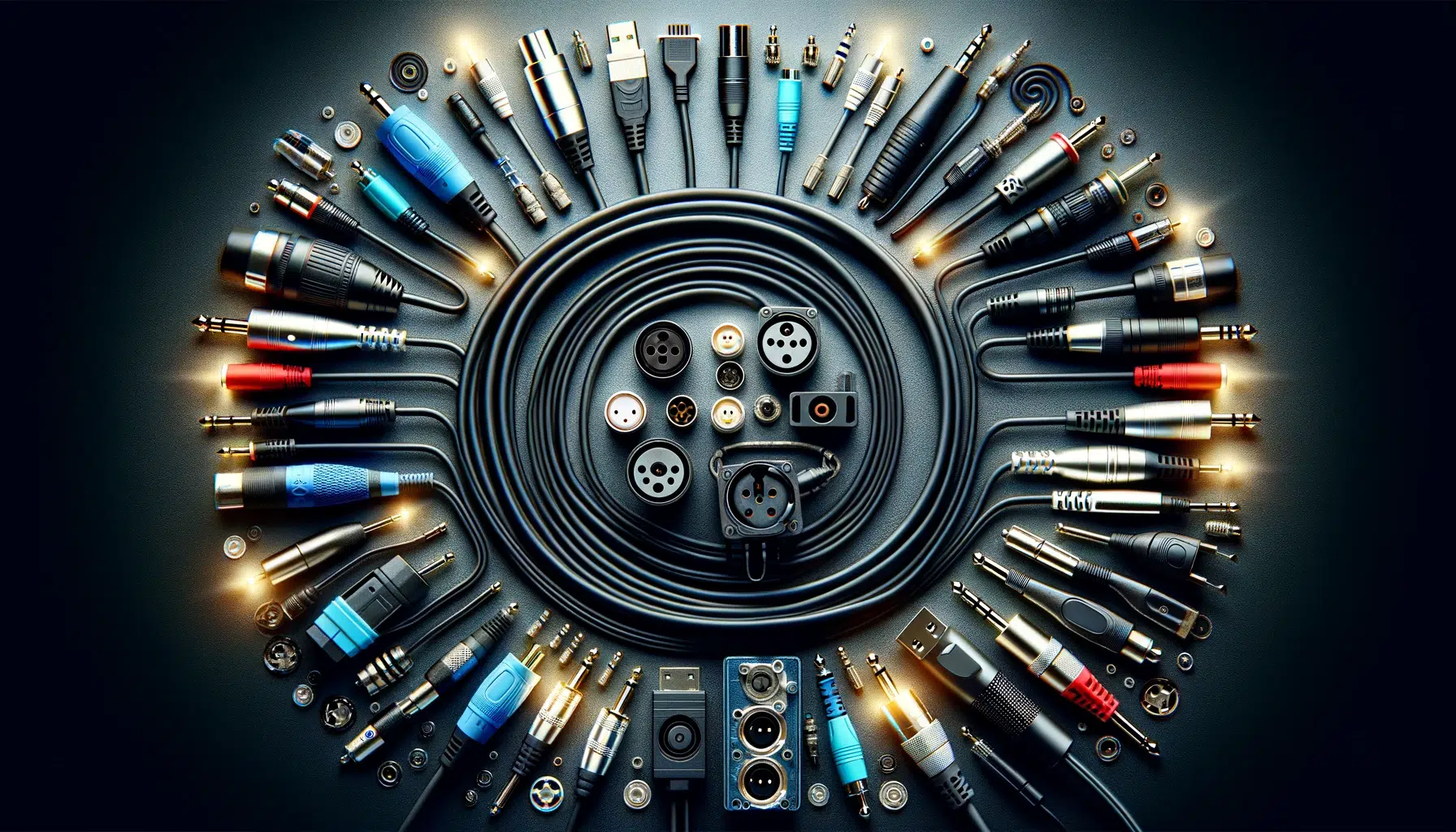
In the dynamic field of digital music production, the significance of audio cables cannot be overstated.
The choice of audio cables is a fundamental aspect that directly influences the transmission and quality of audio signals.
An in-depth understanding of the types of audio cables is essential for achieving optimal sound quality and ensuring seamless audio setup.
The audio cable types range from analog cables, such as RCA and TS cables, to digital formats like USB and MIDI cables.
Each cable type serves a specific purpose and contributes uniquely to the overall sound production process.
Knowledge of these multiple cables aids in creating a more efficient and high-quality audio environment 一 crucial for both studio recording and live performances.
Audio cables are categorized based on their design, functionality, and the type of audio signals they carry.
This includes balanced cables, unbalanced cables, and digital audio cables, each playing a distinct role in sound transmission.
Understanding these categories is key to optimizing the audio signal path in any digital audio setup.
#1. Analog Cables: The Foundation

Analog cables are pivotal in transmitting audio signals in various forms of audio equipment.
These cables (including popular types like RCA and TS cables) are fundamental in converting sound into electrical signals.
They form an essential part of audio setups, from home theatres to professional recording studios 一 ensuring the flow of analog audio signals.
In the realm of digital audio, analog cables still hold significant importance.
For instance,
- RCA cables 一 Frequently used to connect DJ equipment & home audio systems.
- TS cables 一 Indispensable in connecting electric guitars to amplifiers.
Understanding the role of these analog cables in transmitting audio signals not only enhances your production knowledge but helps you stay ahead of the game.
It’s truly crucial if you’re aiming to be a true professional.
#2. RCA Cables: The Versatile Connector
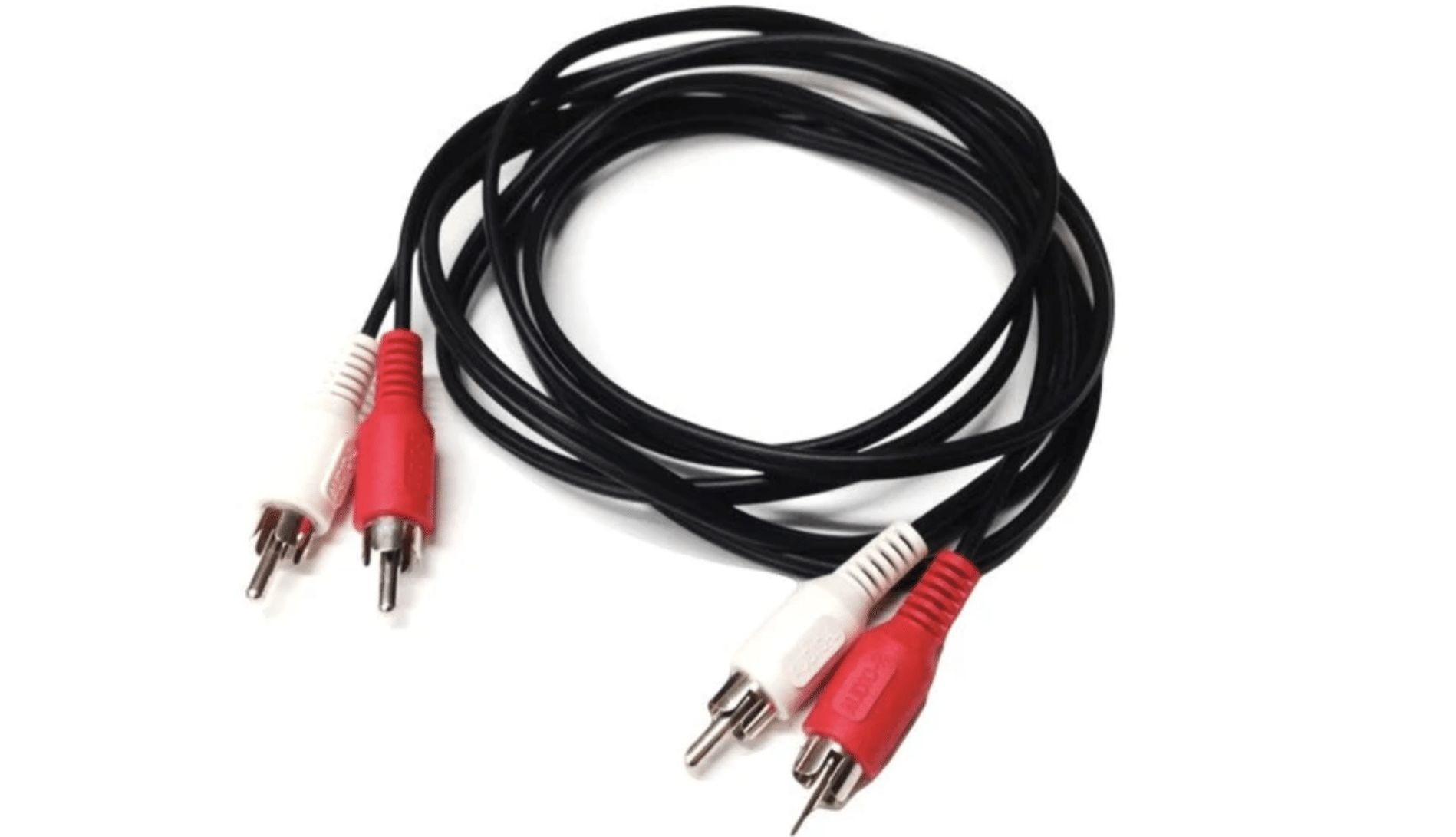
In the audio industry, RCA cables stand out as a versatile and essential component in both analog and digital realms.
These cables, easily identified by their distinct color-coded RCA connectors, are fundamental in connecting various audio devices.
An RCA cable, for example, is often used to link CD players or turntables to amplifiers, which facilitates the smooth transfer of stereo audio signals.
This versatility makes RCA cables a common and reliable choice in various audio setups.
Beyond their traditional use in analog systems, RCA cables have found their place in digital settings as well.
In a typical home entertainment system, an RCA cable might be used to connect a DVD player to an AV receiver 一 transmitting audio signals efficiently.
This adaptability is further highlighted when RCA cables are used alongside digital cables in more complex setups, such as integrating analog turntables into digital DJ interfaces.
The RCA cable’s ability to interface with different types of audio equipment (including those requiring digital cables) makes it a versatile tool in your production toolkit.
Plus, the practicality of RCA cables extends to their use with various audio sources.
For instance, in a recording studio, RCA cables might connect outboard gear like compressors to mixing consoles.
This utility, coupled with the straightforward connectivity of RCA connectors, underscores the RCA cable’s role as a popular audio cable in both simple and sophisticated audio environments.
Whether it’s for a quick connection in a home setup or part of a more intricate system in a professional context, RCA cables prove indispensable for their flexibility and reliability.
#3. & #4. Balanced Cables vs Unbalanced Cables
In audio setups, the selection between balanced and unbalanced cables is a decision that significantly impacts sound quality. Let’s kick off this balanced and unbalanced breakdown with what an unbalanced cable can bring to the table.
- Unbalanced Cables

Unbalanced cables are simpler in design and are often used in less complex audio setups.
This audio cable is typically found in home audio systems and basic studio environments.
Unbalanced cables are suitable for short-distance connections because an unbalanced cable is more susceptible to noise interference.
This is why unbalanced cables are commonly seen in simple applications, such as connecting a media player to speakers.
- Balanced Cables
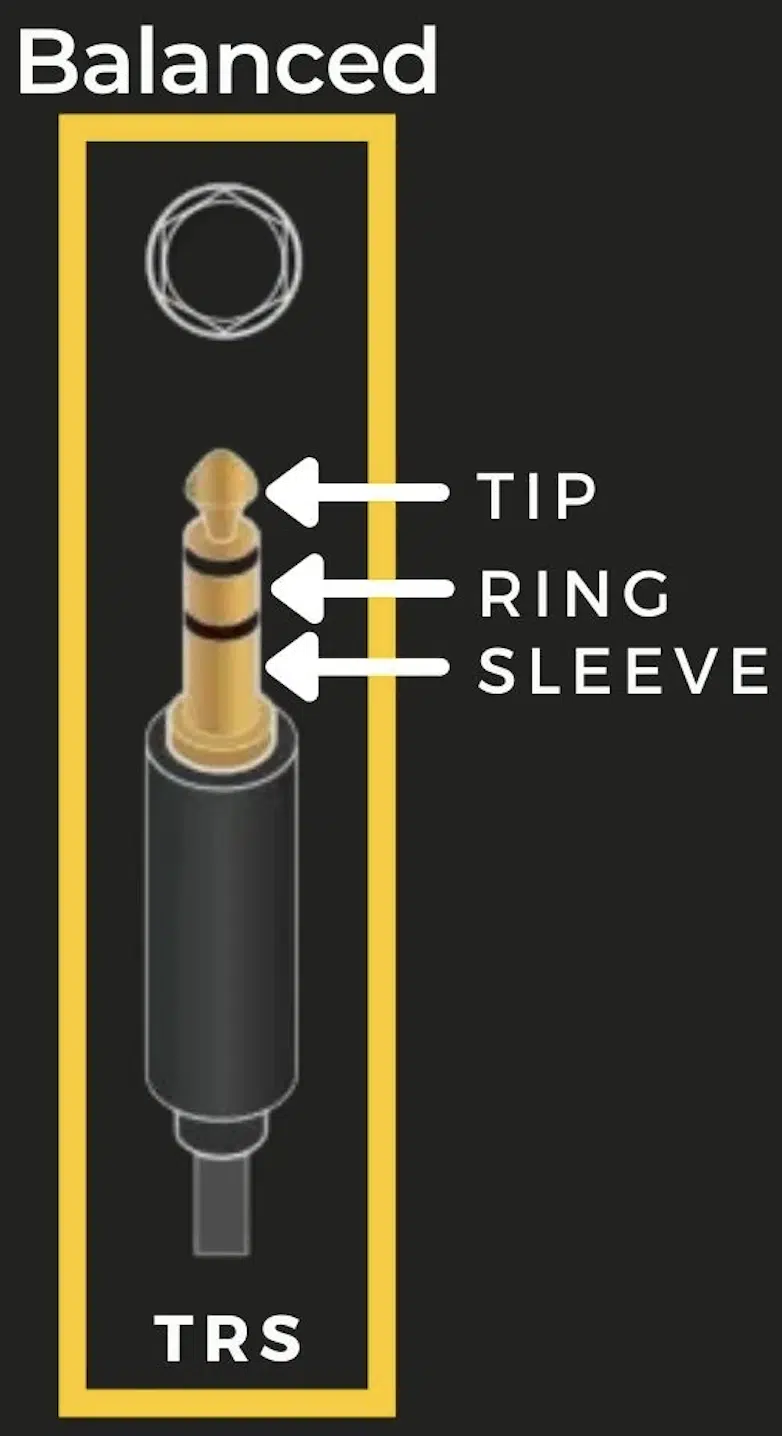
Balanced cables, as opposed to an unbalanced cable, are designed to combat the limitations of unbalanced cables.
With their additional conductors, balanced cables carry inverse copies of the audio signal.
This unique feature of balanced cables allows them to cancel out noise interference 一 making a balanced cable a better choice for professional audio settings
Unlike unbalanced cables, balanced cables are ideal for longer cable runs.
A balanced cable with maintain the integrity of the audio signal over greater distances, which is a necessity in professional studio setups and live sound environments.
When considering the needs of a music production setup, the choice between balanced cables and unbalanced cables becomes crucial.
When it comes to balanced and unbalanced cables:
- For short and simple connections, unbalanced cables might be adequate.
- For more sophisticated and larger setups, especially where long cable runs are involved, balanced cables are the preferred choice.
The ability of balanced cables to provide a cleaner and more reliable audio transmission makes them indispensable in settings where sound quality cannot be compromised.
The decision to use balanced and unbalanced cables should be guided by the specific requirements of the audio system and the environment in which it operates.
-
Pro Tip: Unbalanced Connection vs Balanced Connection
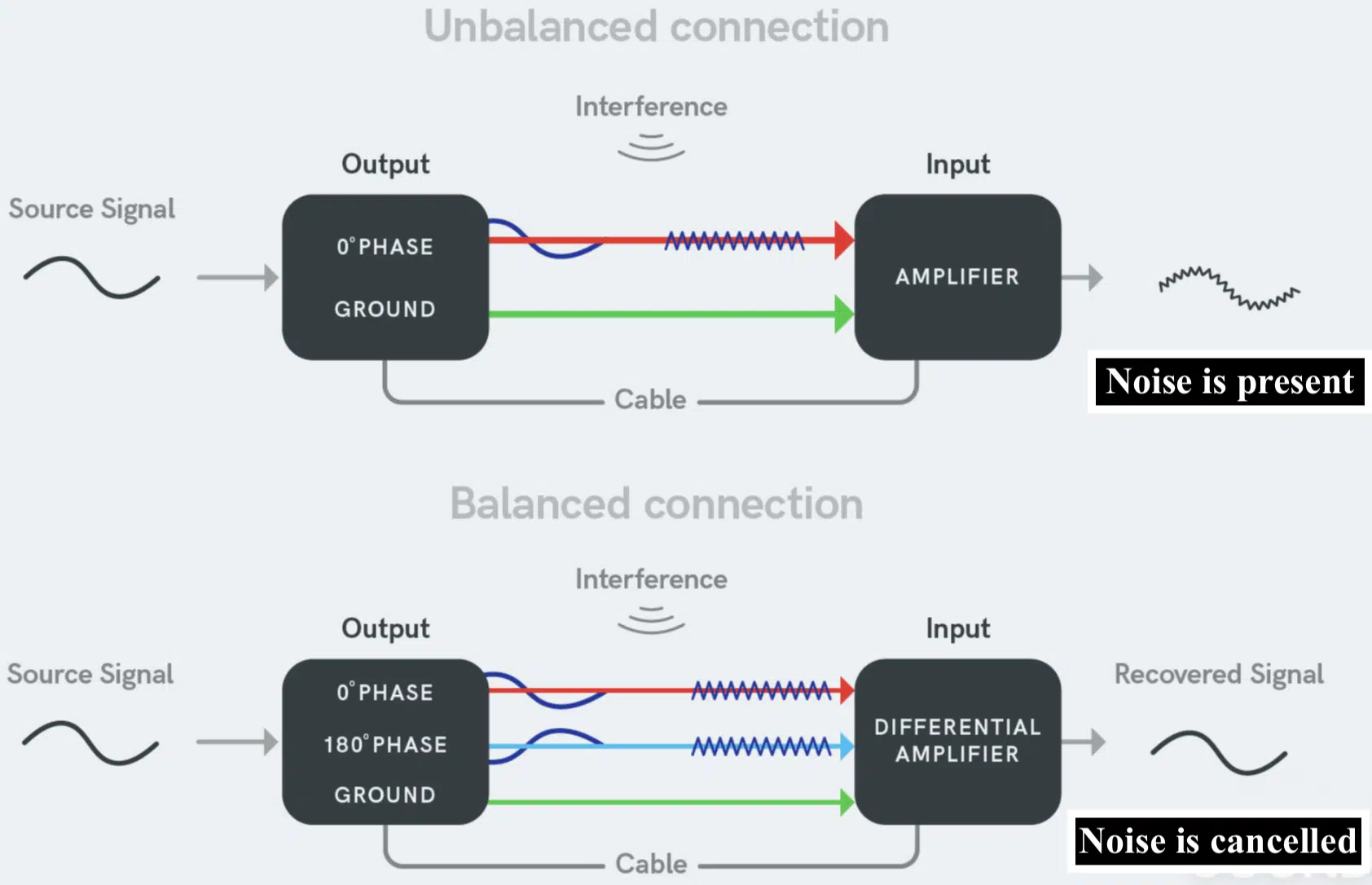
When setting up a digital audio studio, understanding the difference between unbalanced and balanced connections is key.
- An unbalanced connection, typically involving a TS cable, is straightforward but more prone to noise over longer distances. This makes a TS cable less ideal for complex studio setups.
- A balanced connection, using cables like an XLR cable or TRS cable, provides a more stable and noise-resistant audio path.
This is beneficial in recording environments where maintaining audio integrity over longer cable lengths is paramount.
Choosing the right type of audio connection/audio connectors can significantly impact the clarity and quality of the audio output.
#5. XLR Cables: The Professional’s Choice
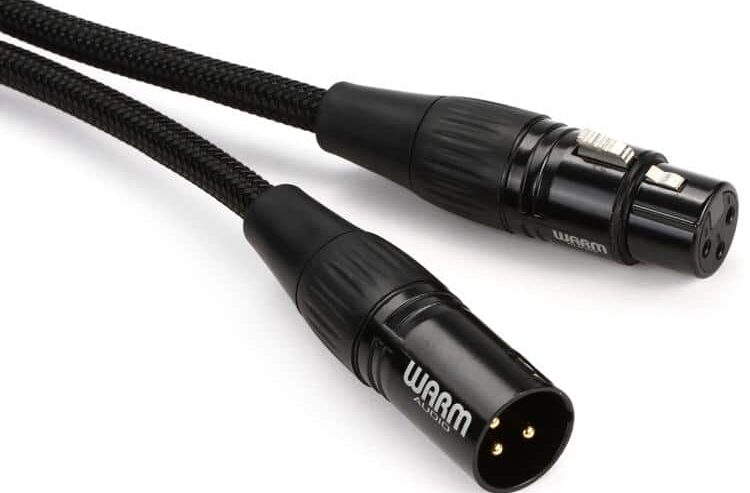
XLR cables are praised in professional audio production, renowned for their reliability and noise-reduction capabilities.
An XLR cable is designed with a balanced connection, making it ideal for transmitting clean and clear audio signals over long distances.
The construction of XLR cables includes three pins:
- One for the ground wire.
- Two for carrying the audio signal.
This design not only minimizes interference but also ensures a secure connection, which is crucial in studio/live sound settings.
XLR cables are commonly employed for connecting microphones to audio interfaces or mixing consoles.
Their robust design makes them a preferred choice for environments where cable integrity and sound quality cannot be compromised.
-
Pro Tip: XLR Connectors and Their Role in Audio Quality
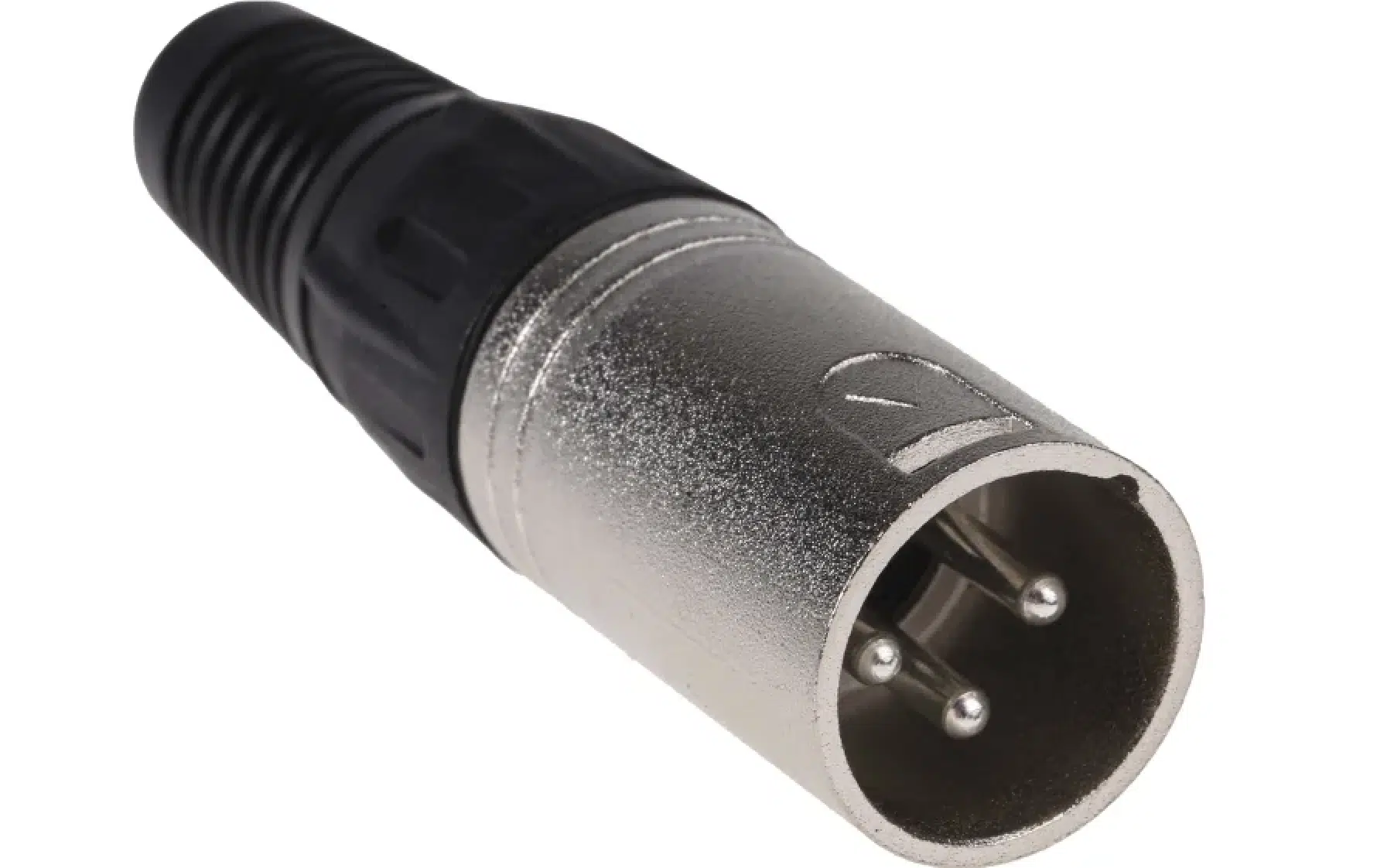
XLR connectors are a defining feature of XLR cables, crucial for maintaining high audio quality.
These connectors, typically with three to seven pins, offer a secure and balanced connection, vital for transmitting clean audio signals over longer distances.
The robust design of XLR connectors 一 featuring a locking mechanism 一 ensures a stable and interference-free connection.
This is particularly important in live sound setups and recording studios.
Their durability and reliability make XLR connectors a preferred choice for professionals relying on balanced audio cables.
#6. USB Cables: Connecting the Digital World
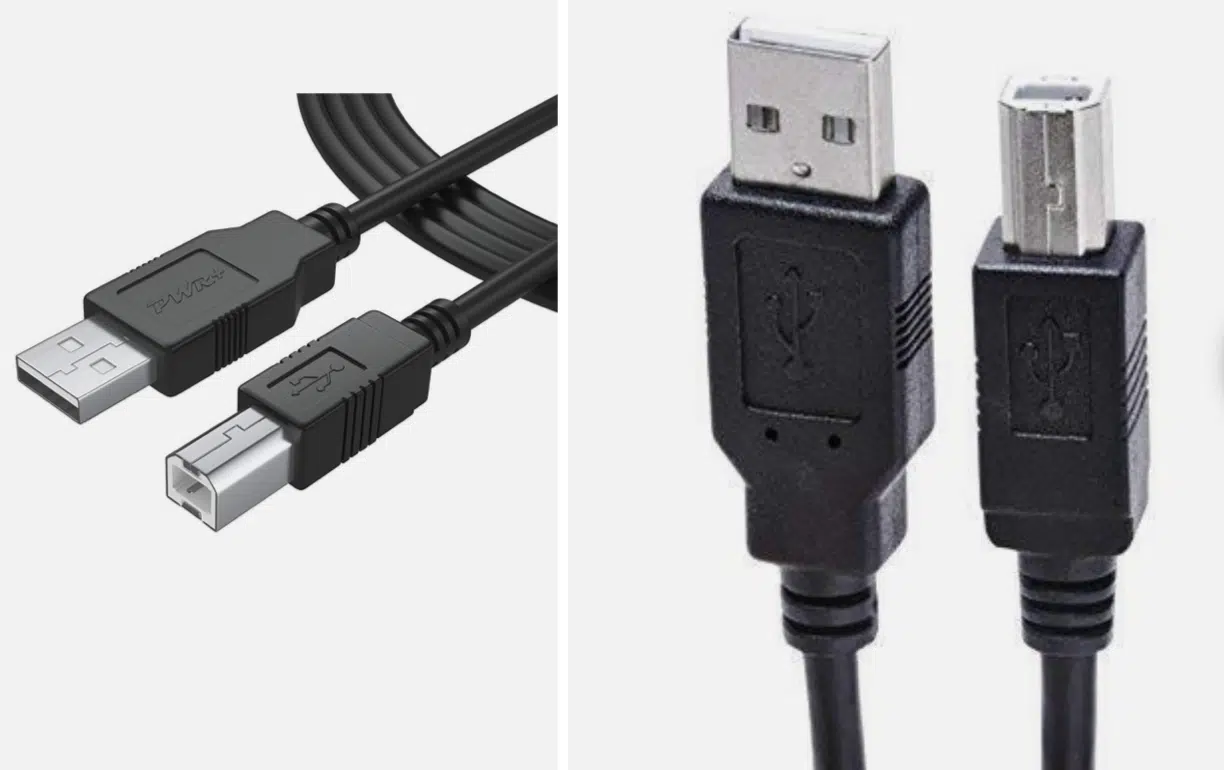
USB cables have become an integral part of modern digital music production and engineering.
They facilitate the connection between computers and various audio devices, such as:
- Audio interfaces
- MIDI controllers
- Digital instruments
The versatility of USB cables extends to their ability to carry digital audio data, power, and MIDI information.
This multi-functionality makes them indispensable in a digital music producer’s arsenal 一 allowing for a streamlined and efficient workflow.
For instance, a USB cable can connect a MIDI keyboard to a computer, which enables the transfer of MIDI data for music production and sound design.
Similarly, audio interfaces often use USB cables to transmit digital audio signals to and from a computer, highlighting their essential role in a digital audio setup.
#7. MIDI Cables: The Language of Digital Instruments
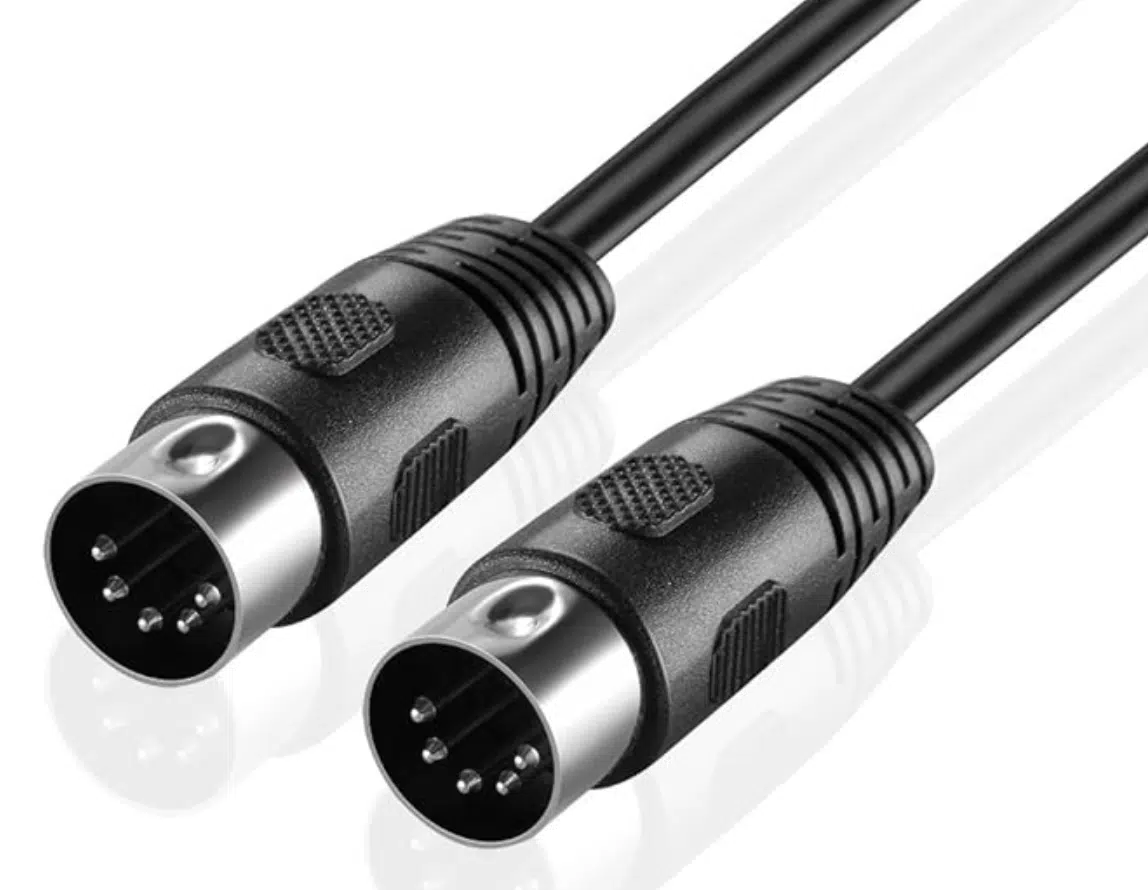
MIDI cables are essential tools in digital music production, functioning as vital connectors that enable various types of audio equipment to communicate.
These cables, specifically designed for MIDI (Musical Instrument Digital Interface) data transmission, are key for linking digital instruments like:
- Synthesizers
- Drum machines
MIDI cables carry digital signals that dictate how these instruments interact and respond to each other.
This makes them indispensable in creating complex musical arrangements.
The versatility of MIDI cables in handling different types of audio data is remarkable.
They are not just limited to connecting keyboards but are also extensively used in integrating drum machines into music production setups.
A single MIDI cable can carry a multitude of signal types, from note sequences to dynamic changes, offering a wide range of control over drum machines.
As well as other MIDI-compatible devices, of course.
Furthermore, understanding how MIDI cables and digital cables work together is crucial for modern producers.
While digital cables transmit audio signals, MIDI cables focus on control signals, which direct the actions of various electronic instruments.
The integration of MIDI cables with drum machines, for instance, allows you to precisely control rhythm patterns and sequences.
Therefore, they are a fundamental element in electronic music production.
The use of MIDI cables extends beyond mere connectivity 一 they are the lifelines that enable seamless interaction between various elements of a digital audio setup.
Specialized Audio Cables: For Specific Needs
Beyond the common types of audio cables, there are specialized cables designed for specific audio applications. These include Speakon cables for live sound, HDMI cables for audio-video setups, and others tailored for unique audio requirements.
#8. SpeakON Cables: The Powerhouse of Live Sound

SpeakON cables are specifically designed for high-power audio applications, such as connecting amplifiers to loudspeakers in live sound settings.
They are known for their ability to handle high current signals without loss or distortion 一 making them a reliable choice for large-scale audio setups.
The solid design of SpeakON cables, including a locking system, ensures a secure and stable connection, crucial in dynamic live performance environments.
Their durability and reliability make them a go-to choice for sound engineers and producers working in the live sound arena.
#9. HDMI Cables: Audio and Video Combined
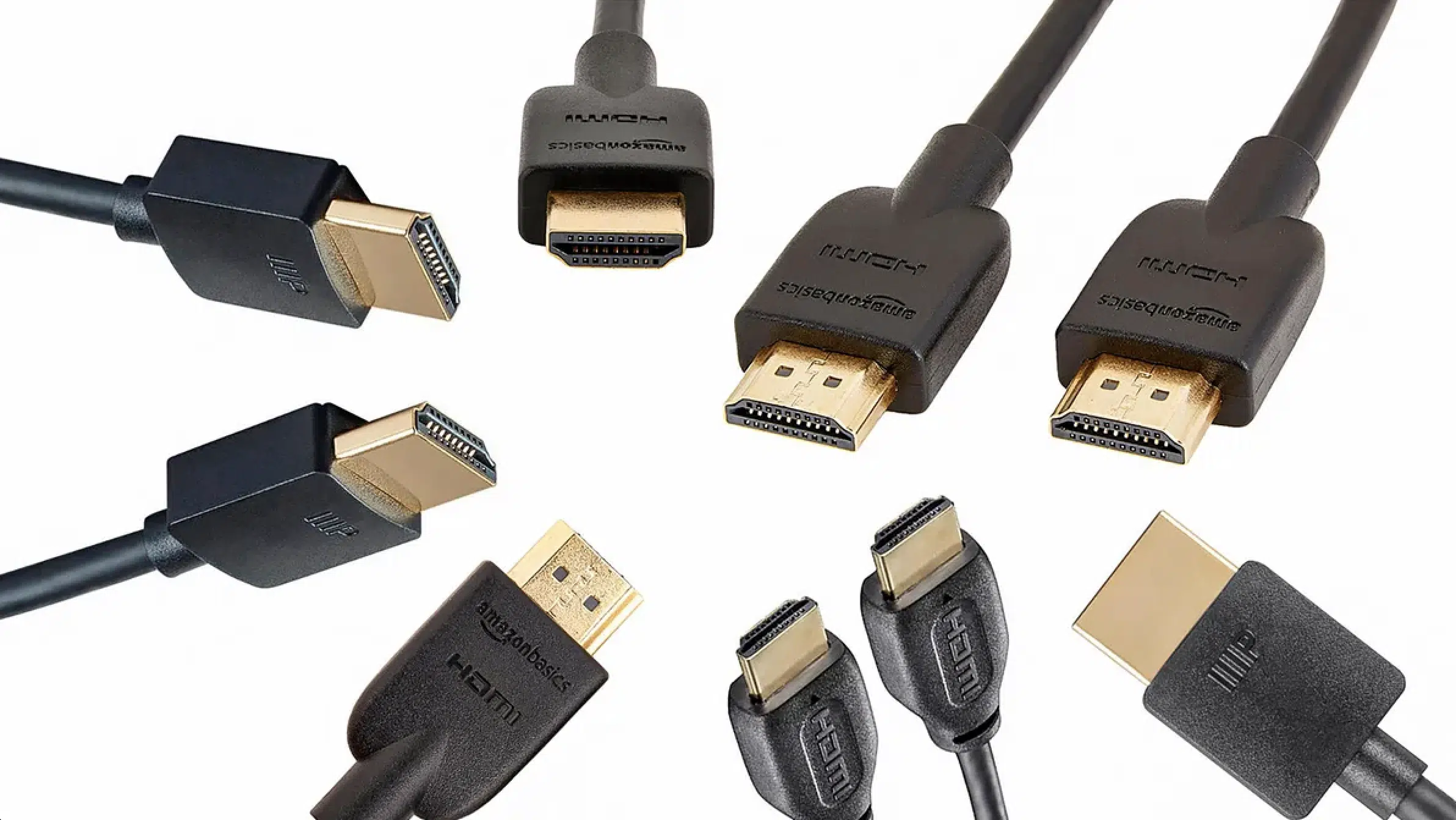
HDMI cables are a key component in setups that involve both audio and video transmission.
They are capable of carrying digital audio and video signals over a single cable, simplifying the audio connection/audio connectors between audio-visual devices.
In a digital music production context, HDMI cables connect computers to:
- External monitors
- AV receivers
This integration is essential for simultaneous audio and video processing, such as in post-production for film and multimedia projects.
-
Pro Tips: What Are Banana Plugs

Banana plugs are a type of connector used with speaker cables (or another like audio cable) to ensure a more secure and reliable connection to audio equipment.
They are named for their distinctive shape, resembling a banana, and are commonly used in high-end audio and home theater systems.
The advantage of using banana plugs is their ability to provide a solid connection with easy plug-and-play functionality.
They are particularly useful in setups where speaker cables need to be connected and disconnected frequently, offering convenience and maintaining signal integrity.
So, think banana plugs, think a speaker cable.
#10. Speaker Cables: Delivering Quality Sound
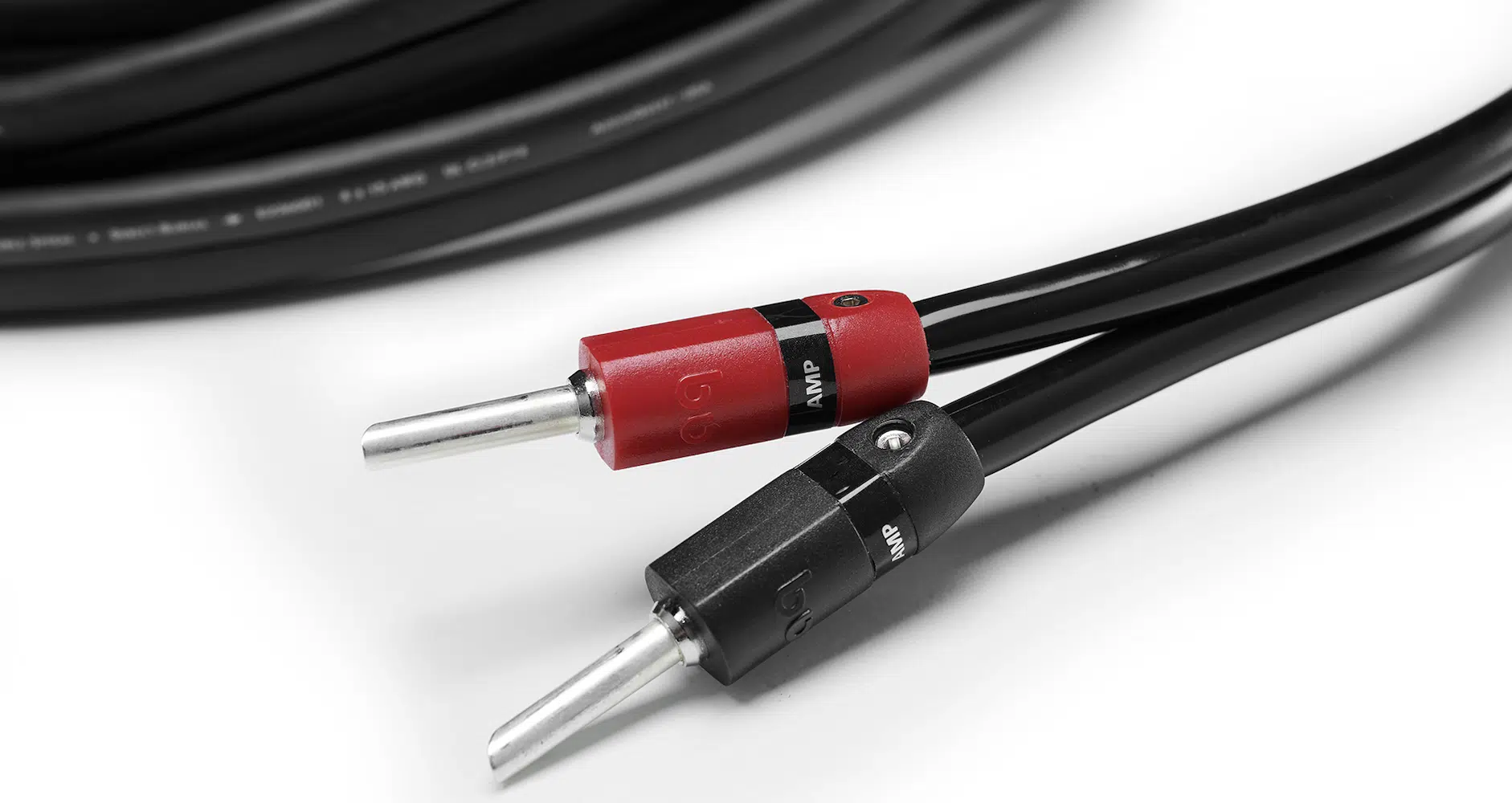
Speaker cables help transfer audio signals from amplifiers to speakers.
They are specifically designed to handle amplified audio signals and ensure that the sound reaches the speakers without any loss or degradation.
The quality of speaker cables can significantly affect the overall sound quality of an audio system.
You should choose an audio cable that matches the power requirements of your speakers and amplifiers.
Make sure to consider factors like cable gauge and length to optimize performance.
In professional audio setups, speaker cables often come equipped with various connectors, such as banana plugs or Speakon connectors, to suit different types of audio equipment.
These interconnect cables ensure a secure and efficient transmission of audio signals, crucial for maintaining sound quality in both studio and live settings.
-
Types of Speaker Cables and Their Characteristics
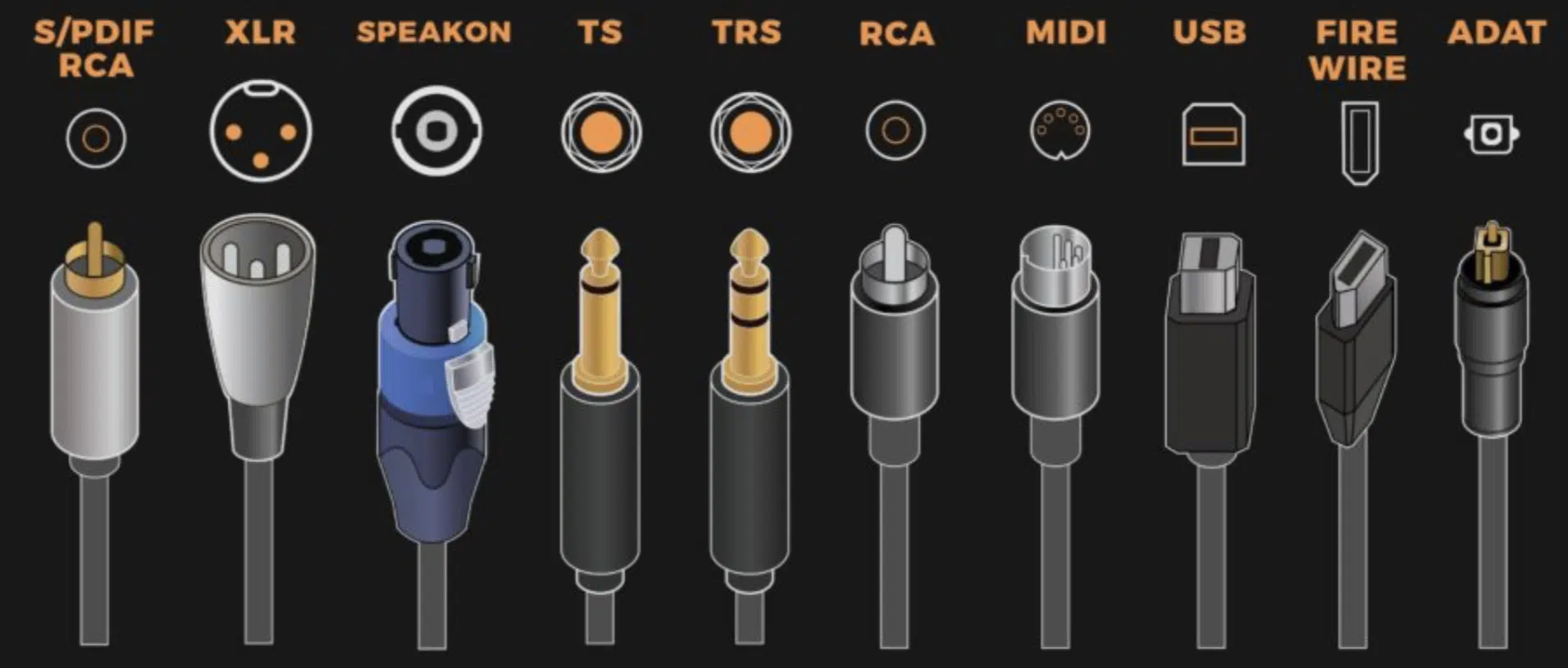
Speaker cables vary in design and characteristics, with different types suited for specific audio applications.
For instance, thicker cables with larger conductor wires are preferred for longer runs and higher power applications, as they minimize signal loss and maintain sound clarity.
The insulation and shielding of speaker cables also play a significant role in preserving audio quality.
Quality cables are designed to resist interference from external sources 一 ensuring that the audio signal remains pure and unaffected throughout its journey to the speakers.
TRS Cables & TS Cables: The Jacks of All Trades
TRS cables and TS cables are among the most versatile types of audio cables, serving a range of functions in audio production. Their adaptability and reliability make them a staple in both professional and home studio environments.
#11. TRS (Tip-Ring-Sleeve) Cables
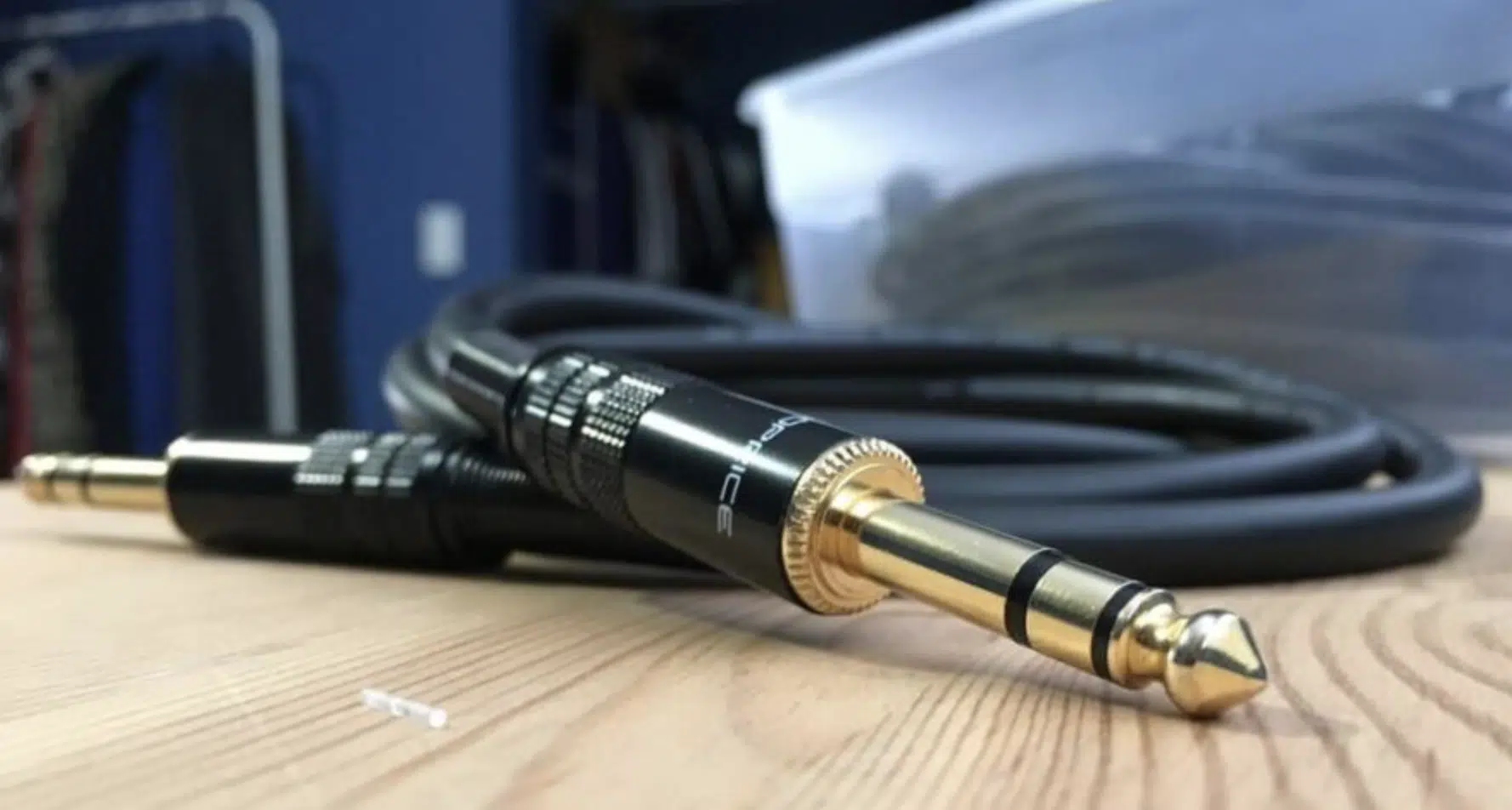
TRS cables, characterized by their Tip-Ring-Sleeve configuration, are versatile balanced cables used in various audio setups.
They are capable of carrying balanced mono signals or unbalanced stereo signals.
In professional audio setups, TRS cables are often utilized for connections requiring balanced cables, such as linking audio interfaces to studio monitors.
Their ability to minimize noise interference over long distances makes them ideal for preserving the clarity and integrity of audio signals in complex setups.
An example of their practical use is in connecting mixing consoles to studio monitors.
The balanced nature of TRS cables ensures that the audio remains free from external interference.
It’s key for accurate monitoring and mixing in studio environments.
#12. TS (Tip-Sleeve) Cables
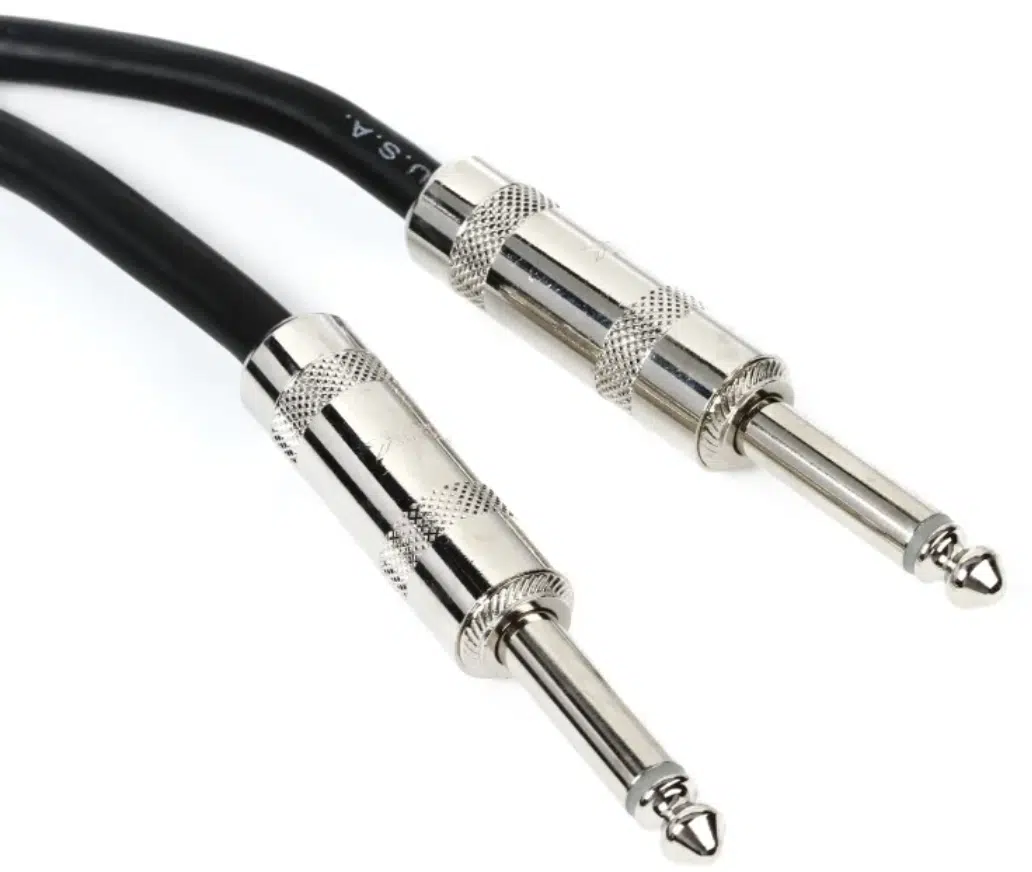
TS cables, with their simple Tip-Sleeve configuration, are a type of unbalanced cable commonly used in audio production.
They are ideal for connecting instruments like electric guitars and keyboards to amplifiers or audio interfaces, especially in situations where cable length is relatively short.
The simplicity and affordability of TS cables make them a popular choice in less demanding audio environments.
NOTE: Their susceptibility to noise and interference limits their use to shorter distances, typically under 20 feet, to maintain audio quality.
A typical application of TS cables is in live performances, where instruments like electric guitars are connected to nearby amplifiers.
In such settings, the direct and unbalanced connection of TS cables provides a clear path for the audio signal 一 ensuring the authentic sound of the instrument is captured.
Integrating Cables with Audio Interfaces and Other Audio Equipment
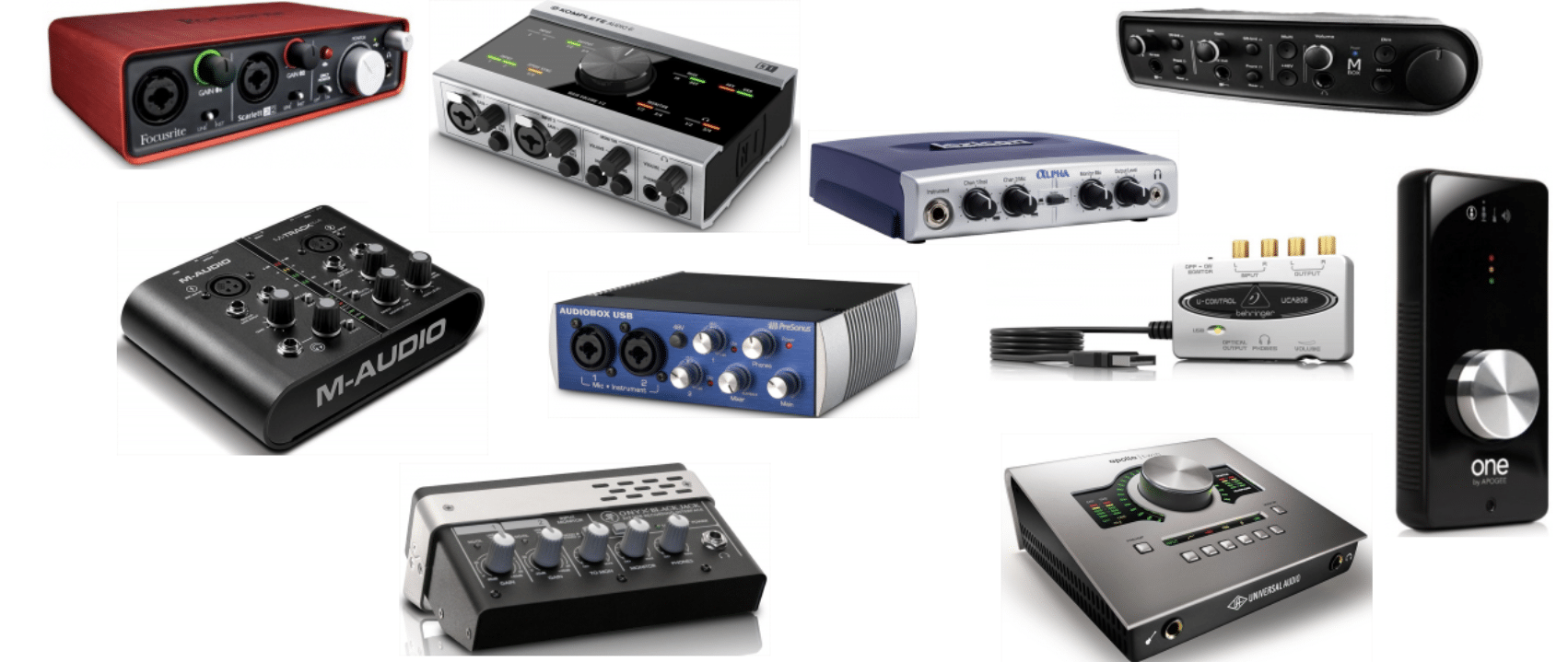
Proper integration of cables with audio interfaces and equipment is essential for a successful digital audio production setup.
Audio interfaces act as the hub for connecting various audio sources and outputs, and the type of cables used plays a critical role in this integration.
For instance:
- XLR cables are often used to connect microphones to interfaces
- TRS cables may link interfaces to studio monitors, ensuring optimal audio quality
Digital audio interfaces frequently utilize USB cables for connecting to computers, facilitating the transfer of digital audio data.
This connection is paramount in home studios where a computer serves as the central component of the audio production setup, handling recording, editing, and mixing tasks.
When it comes to professional audio equipment/setups, the use of balanced cables like XLR and TRS is common to maintain high-quality audio signals, especially over longer cable runs.
Selecting the appropriate cables for each component, from MIDI controllers to studio monitors, ensures a coherent and efficient audio signal flow.
NOTE: For a professional audio setup, understanding the connection of instrument cables to headphone outputs, the role of internal wires in carrying electrical audio signals, and the advanced technology of fiber optic cable for superior sound transmission is essential.
Advanced Cable Concepts
Advanced cable concepts are crucial for mastering a smooth workflow. Understanding aspects like shielding, ground wires, and conductor wires can significantly elevate the quality of audio production, so let’s break it down.
-
Understanding Shielding and Ground Wires
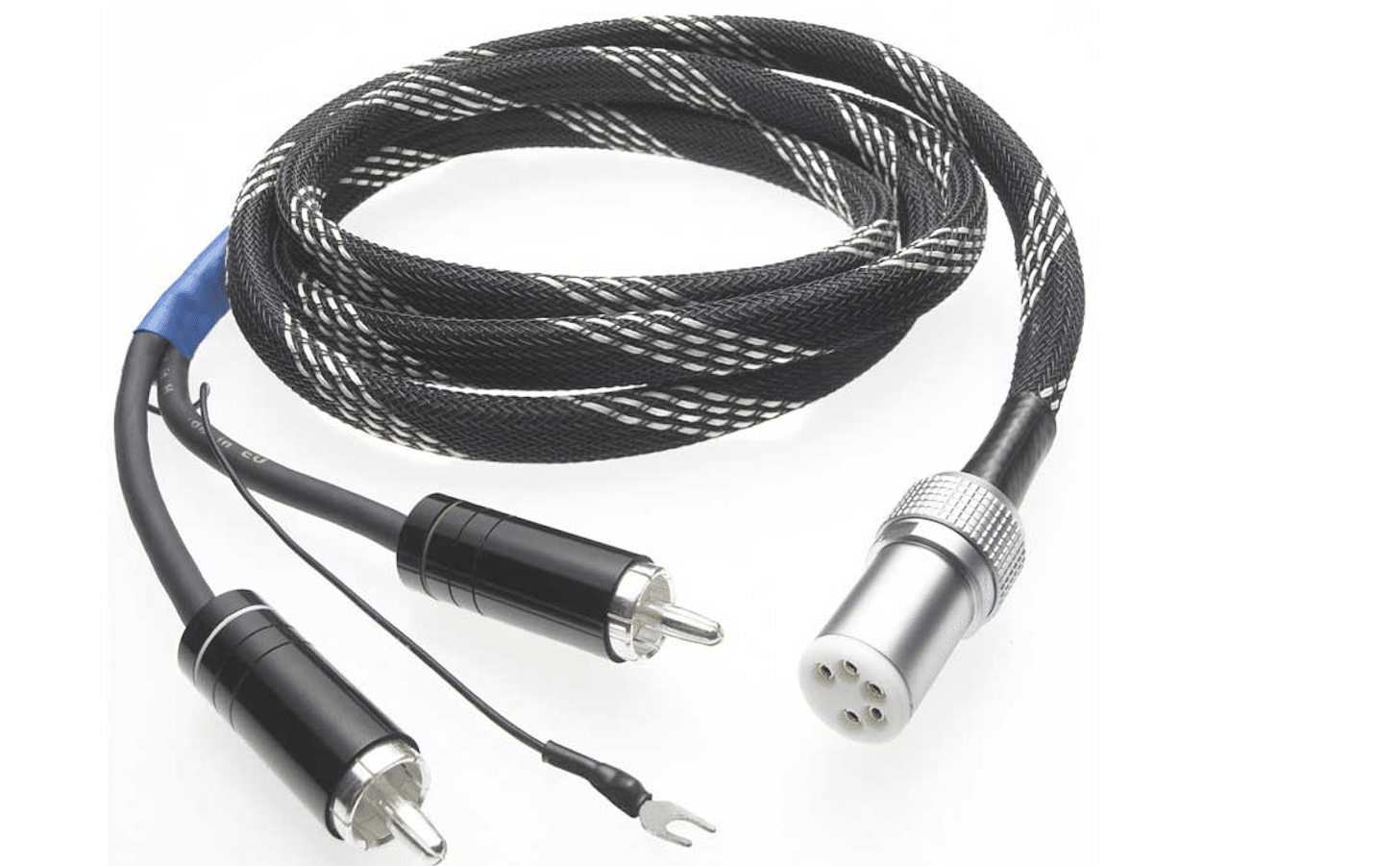
Shielding in audio cables is essential for protecting the integrity of audio signals from external interference.
Cables with proper shielding, such as those used in other audio equipment, prevent noise from electrical sources and radio frequencies from infiltrating the audio signal.
Ground wires in cables serve to eliminate unwanted noise and are especially important in unbalanced cables.
For instance, a guitar cable (TS cable) uses its ground wire to protect against hum and buzz, which is essential for clean guitar recordings in both studio and live settings.
-
The Role of Conductor Wires in Audio Clarity
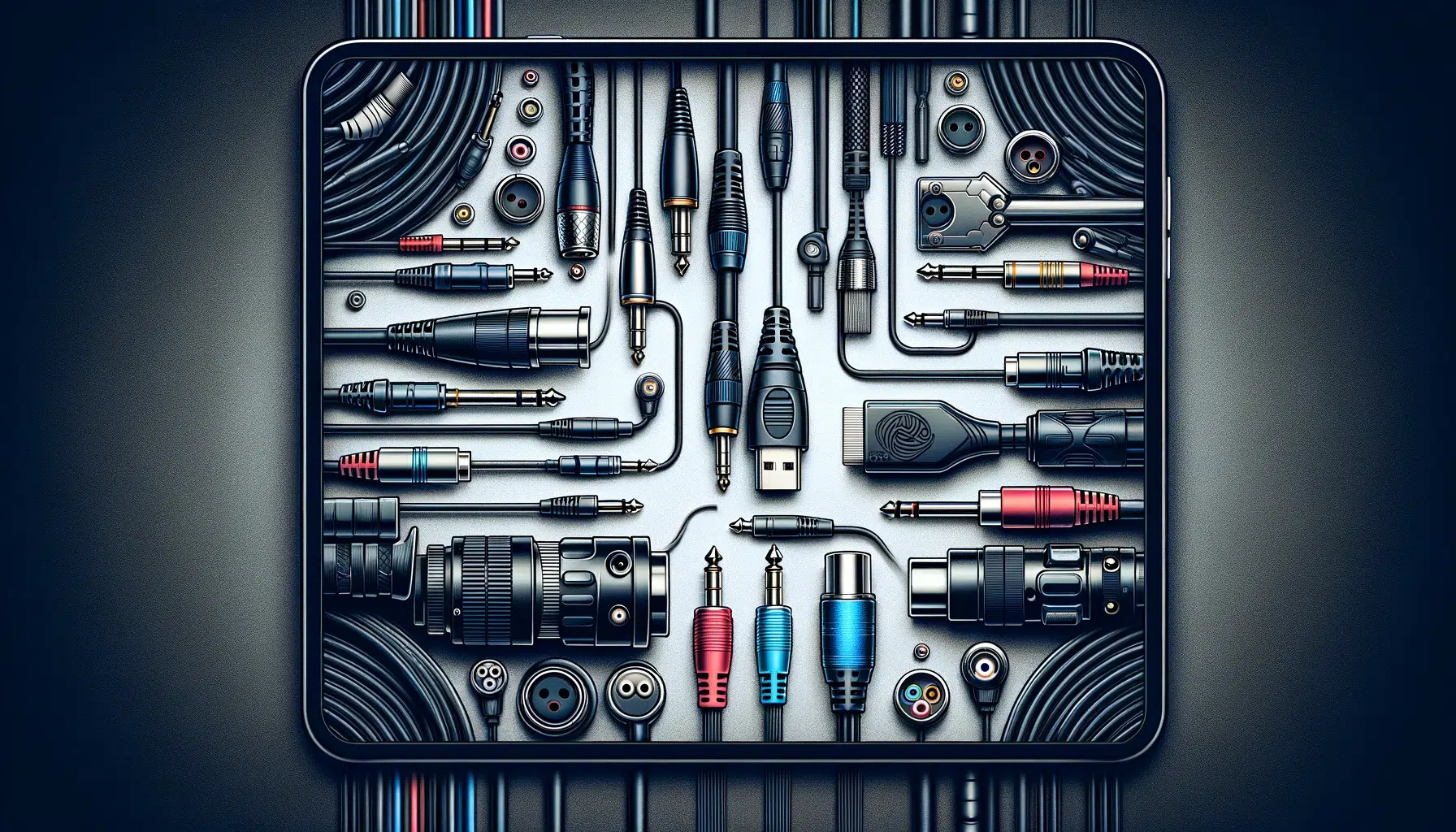
Conductor wires in audio cables are the pathways through which audio signals travel.
The material and size of these wires significantly affect the signal’s:
- Clarity
- Strength
- Performance
For example, larger conductor wires in speaker cables can handle higher power loads 一 ensuring clear and undistorted sound delivery to speakers.
Regarding digital audio cables, such as USB and HDMI cables, the conductor wires are designed to carry digital audio data efficiently.
The quality of these wires determines the fidelity and integrity of the digital audio signal, crucial for high-resolution audio production and playback.
-
Organizing and Labeling Your Cables: Audio Setup Essentials
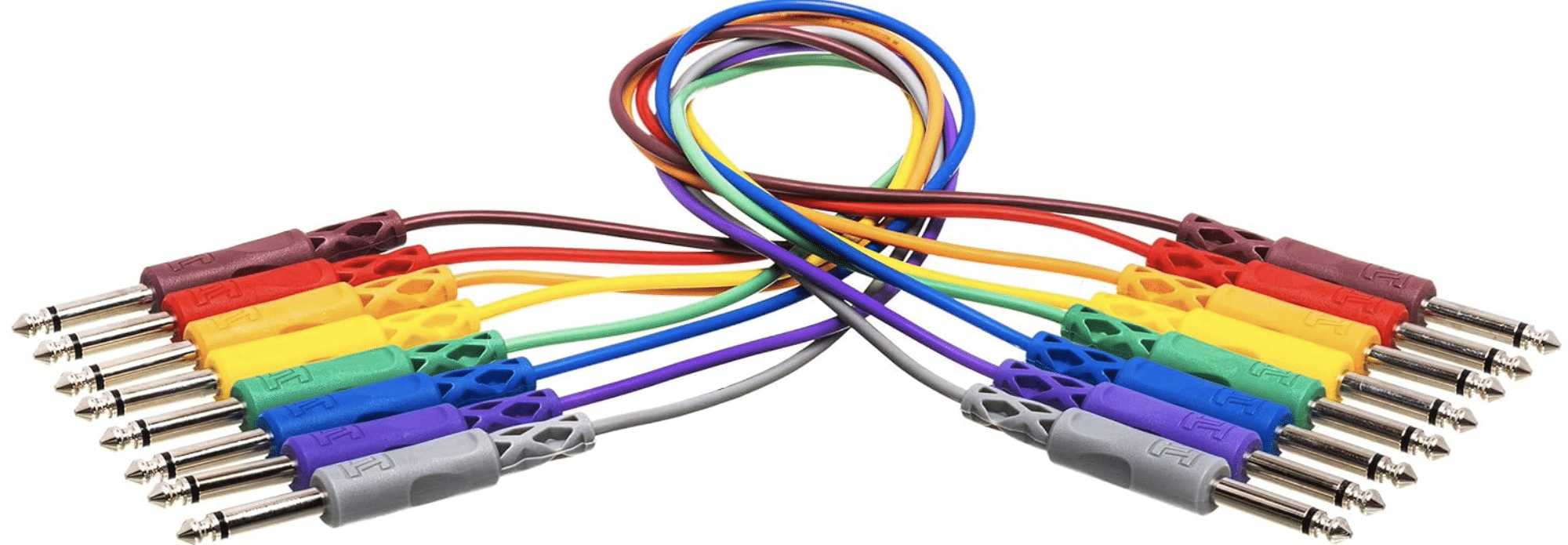
Organizing and labeling cables is a key practice in managing a digital audio setup.
This not only helps in quickly identifying and connecting the right cables but also in maintaining an orderly and efficient workspace.
Using color-coded labels or tags on cables (such as on XLR or USB cables) can streamline the setup and troubleshooting process.
This organization is particularly beneficial in complex setups involving multiple audio devices and cable types, ensuring a smooth workflow.
Bonus: Random Tips To Master the Different Types of Audio Cables
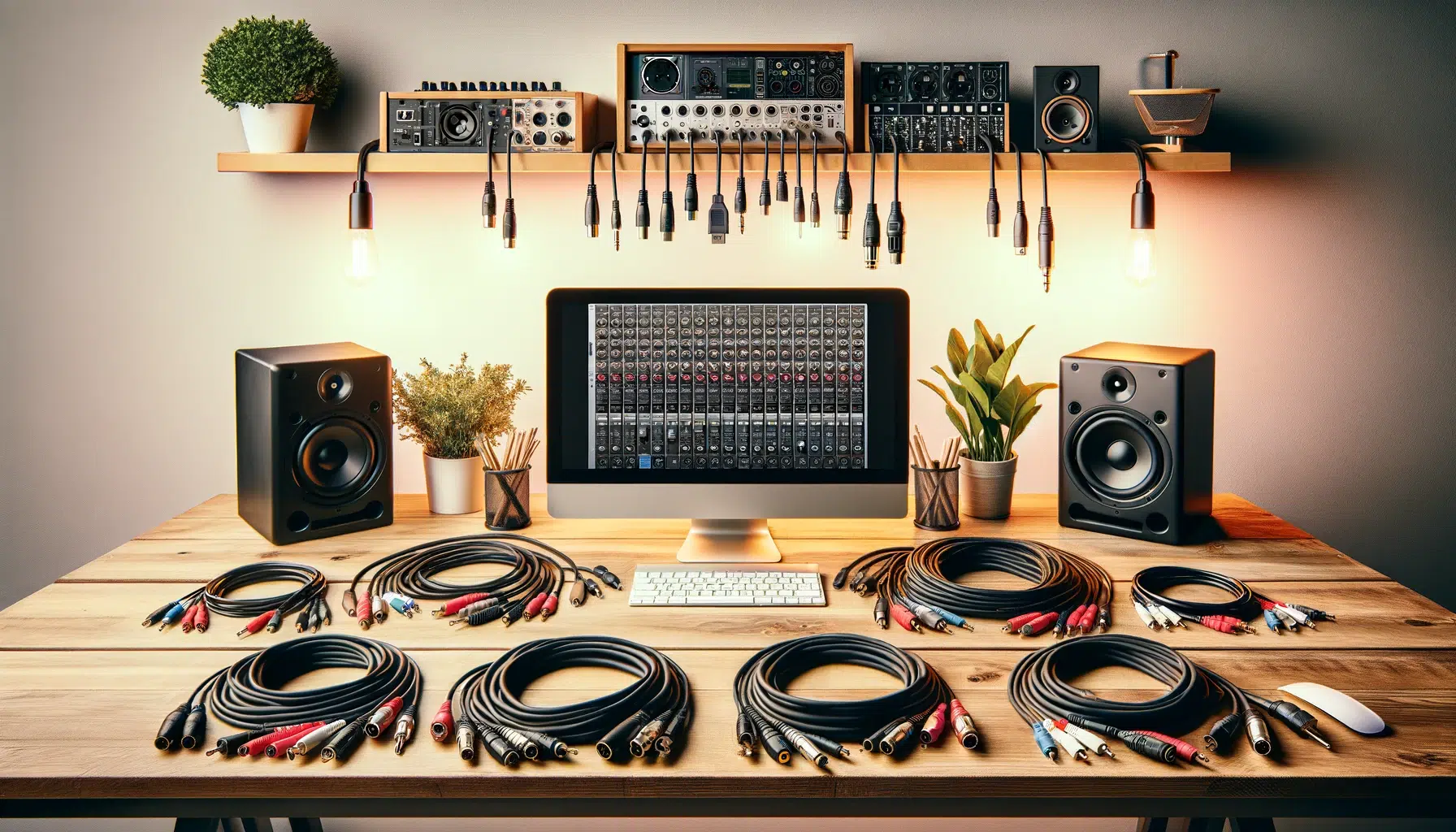
#1. When delving into the world of audio cable types, it’s important to recognize that not all XLR cables are created equal… Some are designed specifically for microphone audio, featuring high-quality shielding to ensure clear transmission.
#2. A MIDI cable, though a popular audio cable, is unique in its function, primarily used for transmitting control signals rather than audio signals.
#3. Regarding live sound or studio settings, understanding the distinct characteristics of cable types, such as the reinforced cable braiding found in some higher-end TRS cables, can significantly improve the durability/performance of your setup.
#4. In terms of connectivity, remember that balanced cables feature a design that helps reduce noise interference. This makes them ideal for preserving the integrity of balanced signals across audio channels.
#5. When you need to plug in unbalanced gear, using an appropriate unbalanced audio cable is key to avoid potential signal issues.
#6. A common misconception is that a USB cable or an Ethernet cable can be substituted for audio purposes. However, each cable type is tailored for specific uses and signal types, including coaxial cables and optical cables. For instance, optical cables are excellent for transmitting digital audio signals without electromagnetic interference.
#7. When considering cable types for a versatile and robust audio setup, don’t overlook the importance of a quality audio cable. Popular audio cable choices often include balanced cable variants for longer runs and TRS cable options for connecting professional audio equipment.
#8. Understanding the nuances of these cable types, such as which are best suited for carrying balanced signals or the advantages of using an audio cable with extra shielding, can make a significant difference in your audio production quality.
Remember, it’s all about choosing the right tool for the job.
As well as ensuring that your audio setup is both efficient and capable of delivering the pristine sound quality you strive for.
Types of Audio Cables: Final Thoughts
The knowledge of different types of audio cables, from balanced and unbalanced cables to the specific uses of MIDI cables, is indispensable for any digital music producer.
These different types of audio cables form the backbone of sound transmission in your studio.
They impact everything from sound clarity to audio quality.
Similar to the importance of understanding different types of audio cables is the need for high-quality MIDI packs, like the invaluable MIDI Box (Free Teaser).
This renowned pack offers a glimpse into a world where creativity meets professionalism, providing you with 55 expertly crafted MIDI files.
These include chord progressions, melodies, basslines, and drum patterns, essential for enhancing any music production project.
It’s more than just a MIDI file collection 一 it’s a tool for transforming your music.
By utilizing these professional-quality, royalty-free MIDI sequences, you’re equipped to elevate your tracks to new heights.
This integration of top-tier MIDI resources with your audio setup ensures that your music not only sounds great but also resonates deeply with your audience.
So, always remember the importance of audio cables in your setup.
Their role in transmitting every detail of sound is what brings your music to life, making the right audio cables as crucial as the right MIDI pack in your journey toward professional-grade music production.
Until next time…







Leave a Reply
You must belogged in to post a comment.